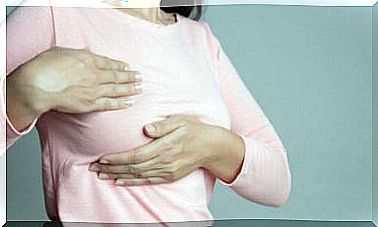Male Cystitis: What Are The Symptoms?

The term cystitis refers to inflammation of the bladder. Although it is a frequent disorder in women, it also affects men. How can it be recognized? The symptoms of male and female cystitis do not differ too much. In both cases it is important to pay close attention to the course of the inflammation.
The male cystitis typically affects men aged between 15 and 50 years. Although this is not a serious health problem, it is very annoying and in some cases it can be a symptom of other conditions. In the next few lines we will tell you everything you need to know about it.
Urinary infections and male cystitis
Urinary tract infections in men can affect both the lower urinary tract, especially the bladder, and the upper urinary tract, i.e. the kidneys. The term “cystitis” refers to infection of the bladder and lower urinary tract.
Simple acute cystitis refers to an infection that affects the bladder only, without involving the rest of the urinary tract or the kidneys. Correct diagnosis in this case is extremely important, as localization affects treatment and prognosis.
Symptoms of male cystitis
Cystitis is less common in men due to the different morphology of the urethra, which being longer hinders the passage of pathogens into the bladder. At the same time, as reported in a publication by the National Center for Biotechnology Information , the antibacterial defenses of the prostatic fluid also reduce the chances of cystitis in men.
In most cases, male cystitis is not prone to complications and the symptoms are similar to female ones. In general, the following is observed:
- Dysuria : painful urination. Such pain or discomfort may be felt as a stinging or burning sensation.
- Increased frequency of urination : Also known as pollakiuria, characterized by increased urine output.
- Urgency to urinate : or the urgent need to urinate, impossible to hold back.
Among the other less frequent symptoms we have:
- Suprapubic pain.
- Nocturia, i.e. urination during the night.
- Difficulty in passing urine stream.
- Hematuria, which is blood in the urine.

Possible complications
If the symptoms of male cystitis recur frequently or are accompanied by pelvic or perineal pain and fever, it could be prostatitis. It is therefore advisable to undergo a urological examination.
Similarly, the presence of fever, chills, fatigue and sensitivity in the flank area or costovertebral angle excludes the diagnosis of simple acute cystitis. Such clinical manifestations indicate a picture of pyelonephritis.
A correct diagnosis of cystitis is essential to prescribe the necessary antimicrobial treatment and, therefore, to prevent any complications. Of course, the doctor will determine whether the symptoms are attributable to this infection or to another condition.
Diagnostic tests
The doctor will begin the visit with a symptom-focused interview. In this way he will be able to establish the need or not for any additional examinations. Between these:
- Urinalysis : through microscopic examination or through test strips to detect any pyuria.
- Urine culture: Also called urine culture, it provides antibiotic susceptibility data. Gram staining can be useful in guiding the choice of antibiotic therapy pending culture results. The presence of bacteriuria will therefore be detected. If cystitis is suspected, this examination is always performed. No antibiotic treatment will be prescribed without first collecting a urine sample for the culture test.
- Other tests : If acute prostatitis is suspected, a digital rectal exam will be done. In the presence of an edematous and sensitive prostate, the diagnosis can be confirmed.
For men with cystitis, particularly with recurrent episodes caused by the same strain of bacteria, a test for prostatitis will be done.

Risk factors for acute infection
Some particular characteristics can favor the development of an acute and complicating urinary tract infection. The doctor will therefore take special precautions if patients show:
- Alterations of the urinary tract: nephrolithiasis, strictures, stents or urinary diversions.
- Impaired immune system : neutropenia or late stage HIV infection.
- Diabetes mellitus not adequately controlled.
How to calm the symptoms?
As anticipated, the rate of development of male cystitis in individuals under the age of 50 who are in good health and who do not suffer from other disorders is quite low. Beyond this age, however, the risk also increases due to prostatic hypertrophy that many men suffer from.
In the presence of the symptoms of cystitis, it is advisable to undergo a medical examination as soon as possible to establish the correct diagnosis and evaluate the appropriate treatment. It is also advisable to monitor the course of the disorder, together with the results of the urine culture.
In some cases, the nephrologist or urologist will need to examine the entire urinary tract and prostate. Finally, it is worth remembering that adopting a healthy lifestyle, which includes the habit of drinking plenty of water during the day, is the best prevention of recurrence.









